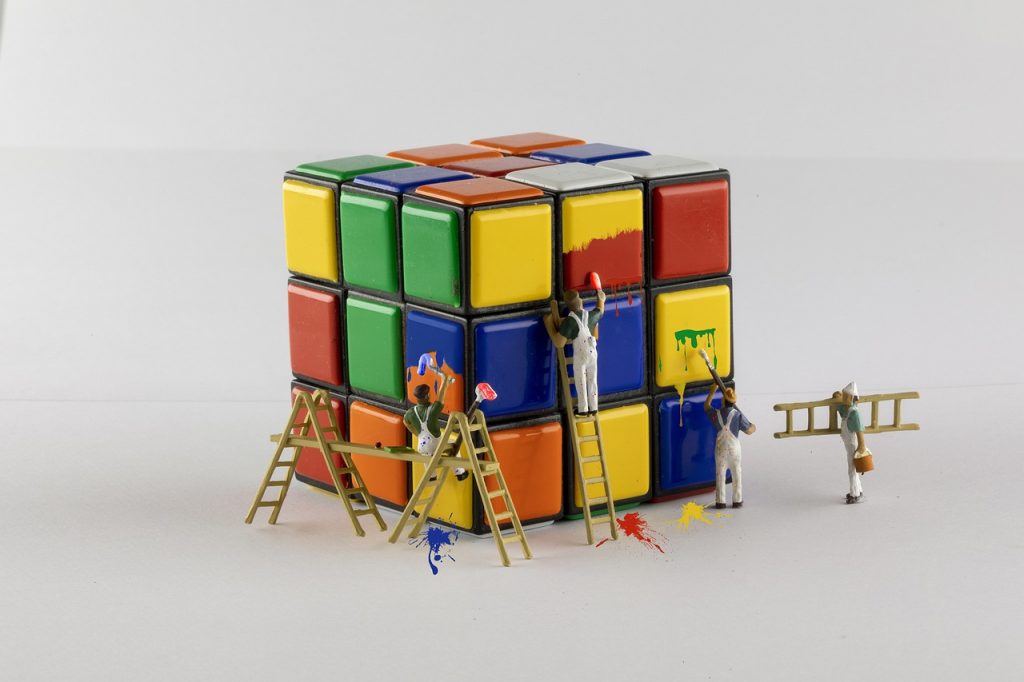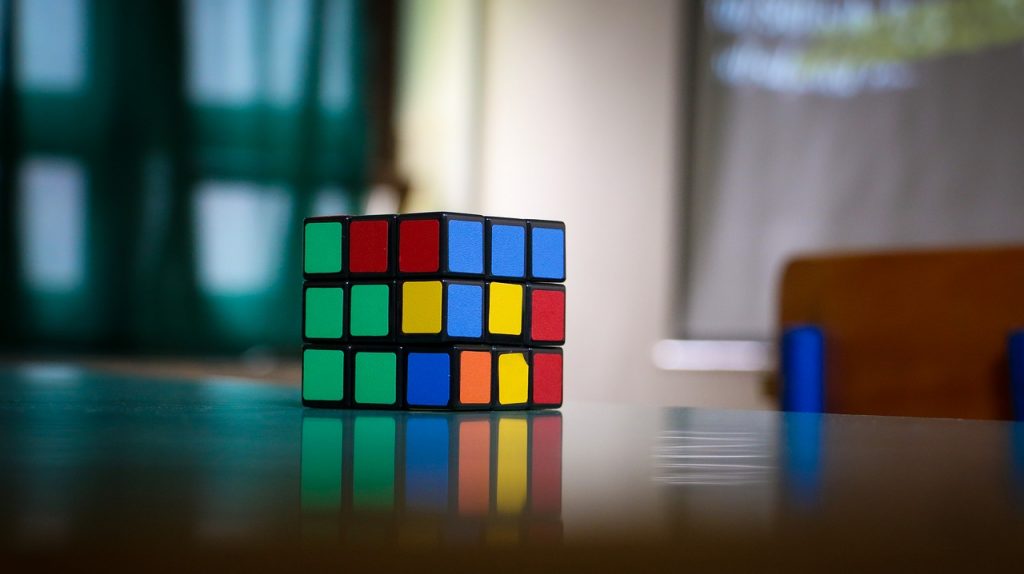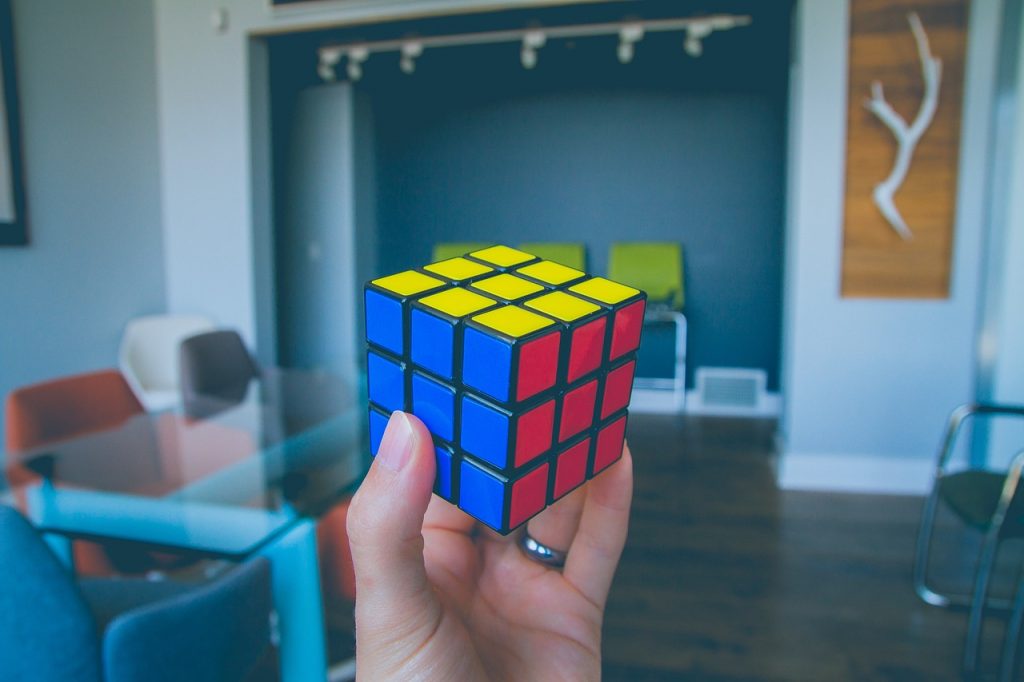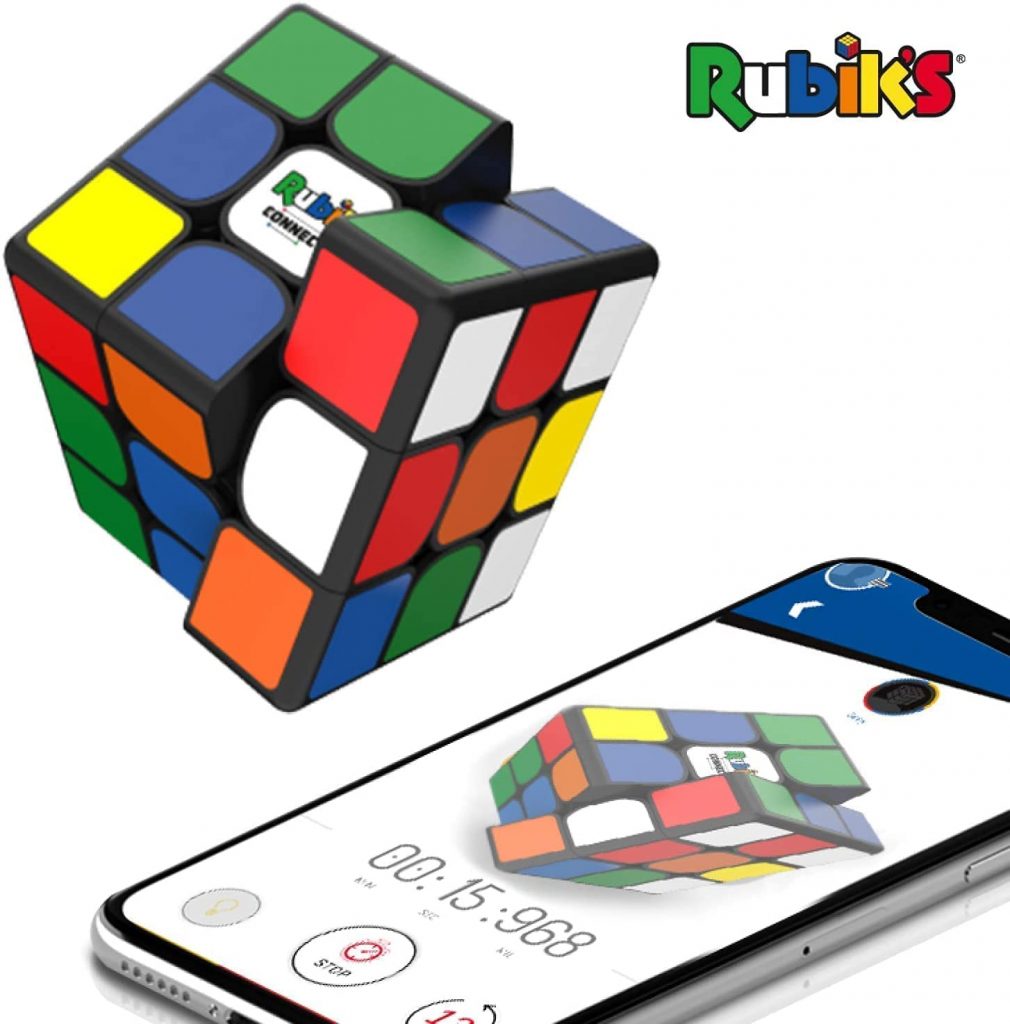How Is A Rubik’s Cube Made?
Find out everything you need to know about the Rubik's Cube, one of the world's most popular puzzle games.
This article is more than 2 years old

The Rubik’s cube has been a worldwide cultural staple for over 40 years. It is easily recognized by its distinctive 3-dimensional square shape and four uniquely colored sides, each made up of 26 tiny cubes. To play with a Rubik’s Cube, one is meant to twist and turn the cube on all of its axes in order to shuffle the tiny colored cubes on each side and then solve the cube by returning each color to their matching positions. It is as challenging as it is addictive, which is one of the many reasons why it has perpetually remained in the hearts and minds of the public for over four decades.
History of The Rubik’s Cube

The Rubik’s cube was originally invented by Ernö Rubik, a sculptor and professor of architecture at the Academy of Applied Arts and Crafts in Budapest, in 1974. However, the history behind the idea of the cube goes a little farther back. A game designer from the United States, Larry D. Nichols, was granted a patent in 1972 for a puzzle he created. It was a movable cube with sections held together by magnets. Around the same time a UK gentleman, Frank Fox, filed for a trademark for his invention of a sliding puzzle game that featured numbered cubes on a flat board. He was granted ownership of that idea in 1974. Both of these concepts, while not the Rubik’s cube themselves, were developed under similar veins of thinking.
Ernö Rubik, however, never set out to invent anything, rather the Rubik’s cube was developed out of an idea he had come up with to teach his students the principles of 3-dimensional objects. It was when Rubik tested out the lesson himself that he had realized that he indeed created a perplexing puzzle game. Upon his realization, he applied for a patent in Hungary which he was granted in January of 1975. He called it the Magic Cube.
Rubik’s Magic Cube was first sold locally in Budapest and then by 1979 has made its way to Germany’s Toy Fair. By 1980 Ideal Toy Corp., the company that was also known for originally distributing the popular game Mouse Trap, secured the rights to license and manufacture the Magic Cube. It was then that the Magic Cube officially came to be known as the Rubik’s Cube. It was an instant hit that skyrocketed in popularity throughout the 1980s, and still to this day remains an endearing and recognizable tactile-gaming icon.
Design, Construction & Distribution of The Rubik’s Cube

To understand how the Rubik’s cube is made, one must first understand the basic concepts behind its design. Each cube measures 2.25” on each side and consists of 26 little cubes or “cubelets.” Each cubelet is connected by an extension to an inner core cube that is encased in a pivotable cross mechanism. This design allows each cubelet to move independently of the other while keeping the overall integrity of the cube intact.
The mathematics behind the puzzle of the cube are just as interesting as the cube’s design itself. The premise behind the Rubik’s cube is that while, mathematically, there are over 3 billion potential combinations for how the cube can look, that there is only one definitive solution. The solution being, to have all like colors on any given side. This concept has fascinated both mathematicians and Rubik’s cube enthusiasts alike and over the years many have developed their own sure-fire ways to the solve cube. David Singmaster’s “cube notation” remains among the most popular ways to solve the puzzle.
The Rubik’s cube is manufactured by melting and molding together plastic pellets to form the components and the structure of the cube. The parts are then inspected by hand to ensure they were formed properly. From there the Rubik’s cube components enter into an assembly line where the construction process is completed, the cubelet stickers are applied, and then finally the cube is packaged and marked as ready for distribution
Legacy and Looking To the Future

Initial surging popularity for the Rubik’s cube dwindled down around 1984. However, in 2009, it was honored with the title of the World’s Best Selling Puzzle game and has continued to hold its own despite rapidly advancing technologies.
Moreover, in recent months, interest in the Rubik’s cube has taken a noticeable upturn. The renewed interest might partially have been due in part to people looking for ways to occupy their time during the lockdowns instituted because of the pandemic. Additionally, there has been a revived push to update both the Rubik’s Cube itself and the marketing behind promoting it in an effort for it to find a following with a whole new generation of fans while also striking a chord of nostalgia from those who were initially captivated by the ever-so-simple yet so infinitely complex cube.
The new and improved cube, which currently sits at the top of Amazon’s Holiday Gift Guide, is equipped with modern features like app connectivity while still maintaining the essence of the kind of game the Rubik’s cube actually is. And of course, the classic cubes are still readily available. All in all, the Rubik’s cube has stood the test of time and its future is looking brighter than ever.




